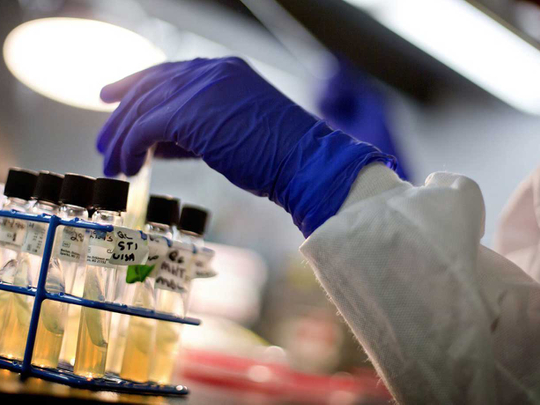
What is antimicrobial resistance?
Bacteria and other microbes that cause diseases in humans and animals are becoming increasingly resistant to previously effective drugs. And this is potentially a big problem. The World Health Organisation fears we are heading for a “post-antibiotic era in which common infections and minor injuries, which have been treatable for decades, can once again kill”.
10 million
The number of people who will die every year due to antimicrobial resistant infections by 2050.
8.2 million
Deaths annually from cancers will occur globally by 2050.
90%
Of all deaths from antimicrobial resistant infections will be in people living in Asia and Africa.
$100 trillion
The estimated total cost globally by 2050 if antimicrobial resistant infections are not tackled.
36%
Increase in the use of antibiotics, either prescribed or self-medicated, in the past decade.
Putting it in perspective
If efforts to curb antimicrobial resistance fail, the number of people who die each year from drug-resistant infections could increase to 10 million by 2050. This would surpass the 8.2 million deaths a year caused by cancer. Dame Sally Davies, England’s chief medical officer, has said the threat is so serious it should be added to the government’s national risk register of civil emergencies.
Antimicrobial resistance and antibiotic resistance?
Antibiotic resistance is a narrow term referring to the resistance to antibiotics in bacteria-based diseases such as tuberculosis and hospital infections like MRSA. Antimicrobial resistance is broader covering infections caused by other microbes such as the parasite that causes malaria, HIV and the fungus that causes candida.
How does it occur?
The development of resistant strains is an inevitable consequence of natural selection. It happens when the DNA of microorganisms mutates and when resistant traits are exchanged between them.
Why is it a problem?
Infections caused by resistant microorganisms do not respond to normal treatments, resulting in longer illness and greater risk of death. It therefore also increases the cost of health care as more expensive treatments are required and longer-term care needed.
Is is getting worse?
Drug-resistant infections currently kill an estimated 700,000 people worldwide each year. And research into some of the common fatal diseases shows widespread prevalence of drug-resistant strains. Drug-resistant tuberculosis has been found in more than 100 countries. Anti-malarial drugs are found to have no effect on a strain of malaria in the Greater Mekong region of Southeast Asia. And pretreatment resistance to the antiretroviral therapy used against HIV has been found to be as high as 22 per cent in some areas.
Why is it getting worse?
The misuse and over-prescription of antimicrobial drugs, including in farming, accelerates the evolution of drug-resistant strains.
Why can’t new drugs be developed?
They can. As part of the WHO’s global action plan against antimicrobial resistance, it wants to produce a whole new class of antibiotics in development by 2019. But new drugs take time and money to develop and analysts say there is often not enough economic incentive to do so.
Antibiotics in the food chain
Experts believe use of the drugs in farm animals is linked, via the food chain, to the spread of antimicrobial-resistant infections in humans. The meat industry is facing increased pressure, from both the public and the private sector, to phase out the routine use of antibiotics.
What can individuals do to help?
If you are prescribed antibiotics, always complete the course and never share the drugs or use leftover prescriptions. Health campaigners are alarmed by the ready availability of antibiotics over the counter in many countries. The WHO says that antimicrobial drugs should only be used when they are prescribed by a doctor.
Should doctors prescribe fewer antibiotics?
Yes. The WHO has urged doctors to only prescribe antibiotics when absolutely necessary. In England, the National Institute for Health and Care Excellence has warned that more than 20 per cent of prescriptions issued for antibiotics — or about 10 million — are likely to be unnecessary.












